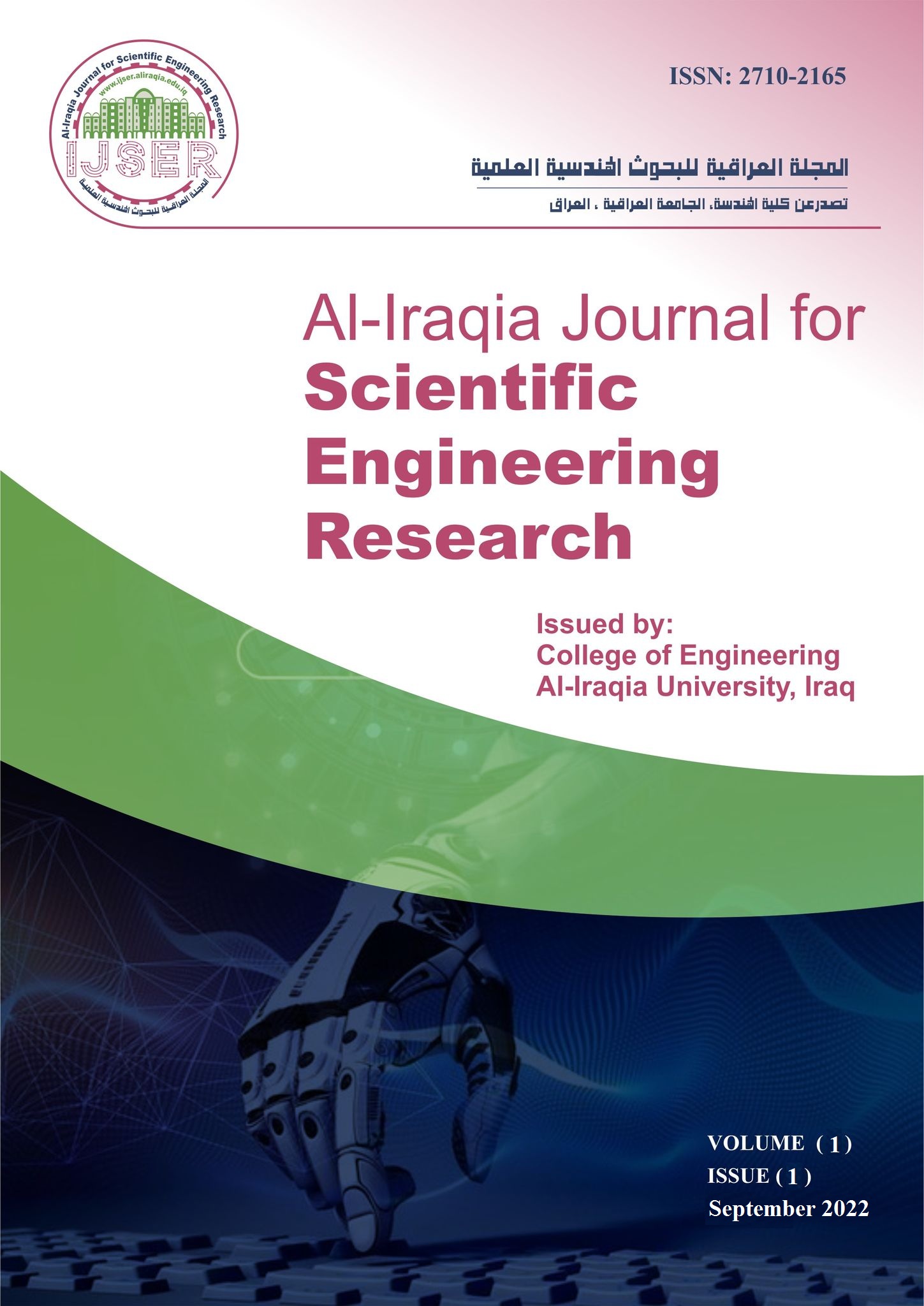TEARP: New Temperature and Energy Aware Routing Protocol for Wireless Body Area Network (WBAN)
DOI:
https://doi.org/10.58564/IJSER.1.2.2022.49Keywords:
Wireless body Area Network (WBAN), Cost Function, Residual Energy, Energy efficiencyAbstract
In the near future, the biomedical research will be one of the major applications for sensor networks. Wireless Body Area Networks (WBANs) consist of a set of bio-sensors that are implanted inside the human body to sense several health conditions, the communication between these sensors is made wirelessly. These sensors are charged by a battery. The nodes will transmit the sensed data through other nodes in the order it to the base station which is located outside the sensing environment which in this case represents the human body. The communication field consumed a significant amount of node’s energy and minimizes the lifetime of the node. Furthermore, the sensor’s operation generates heat which raises the tissue temperature around the implanted sensors. Therefore, the research majorly addresses these issues of communication, a new Temperature and Energy-Aware Routing Protocol (TEARP) has been presented for WBANs implementing a new route-choice system that seeks to equalize the use of energy of sensors and minimize their overheating. This method is depending on a formula that takes into account the remaining energy of sensor nodes, the distance between nodes as well as between nodes to sink, in addition to their temperature when selecting the following relay node. The simulation results show that the TEARP protocol has improved network lifetime efficiency by about 300%and 90%, stability by about 82% and 11%, and residual energy by about 71% and 74% compared to the M-ATTEMPT and Simple protocols respectively.
References
K. Kaur, P. Kaur, and E. S. Singh, “Wireless Sensor Network : Architecture , Design Issues and Applications,” vol. 2, no. 11, pp. 6–10, 2014. DOI: https://doi.org/10.70729/13111401
D. Gaurav Sharma, “A Cluster Head Routing Protocol for Improving Network Lifetime in Wireless Sensor Networks,” CVR J. Sci. Technol., vol. 18, no. 1, pp. 32–37, 2020, doi: 10.32377/cvrjst1806. DOI: https://doi.org/10.32377/cvrjst1806
Z. Ullah et al., “Energy-efficient harvested-aware clustering and cooperative routing protocol for WBAN (E-HARP),” IEEE Access, vol. 7, pp. 100036–100050, 2019, doi: 10.1109/ACCESS.2019.2930652. DOI: https://doi.org/10.1109/ACCESS.2019.2930652
L. Filipe, F. Fdez-Riverola, N. Costa, and A. Pereira, “Wireless Body Area Networks for Healthcare Applications: Protocol Stack Review,” Int. J. Distrib. Sens. Networks, vol. 2015, 2015, doi: 10.1155/2015/213705. DOI: https://doi.org/10.1155/2015/213705
R. Sharma and A. K. Sharma, “ A Framework on Energy Efficient Routing Protocol in WBAN” International Journal of Current Research Vol. 12, Issue, 09, pp.13455-13462, September, 2020, doi.org/10.24941/ijcr.39610.09.2020.
C. Otto, A. Milenković, C. Sanders, and E. Jovanov, “System architecture of a wireless body area sensor network for ubiquitous health monitoring,” J. Mob. Multimed., vol. 1, no. 4, pp. 307–326, 2006, doi:10.1.1.77.2522
R. Singla, N. Kaur, D. Koundal, and A. Bharadwaj, Challenges and Developments in Secure Routing Protocols for Healthcare in WBAN: A Comparative Analysis, vol. 122, no. 2. Springer US, 2022. doi: 10.1007/s11277-021-08969-0. DOI: https://doi.org/10.1007/s11277-021-08969-0
R. Srinivasan and E. Kannan, “A review on energy efficient routing protocols in wireless sensor networks,” Int. J. Appl. Eng. Res., vol. 10, no. 11, pp. 27701–27715, 2015, doi: 10.26634/jwcn.4.4.5912. DOI: https://doi.org/10.26634/jwcn.4.4.5912
S. Movassaghi, M. Abolhasan, J. Lipman, D. Smith, and A. Jamalipour, “Wireless body area networks: A survey,” IEEE Commun. Surv. Tutorials, vol. 16, no. 3, pp. 1658–1686, 2014, doi: 10.1109/SURV.2013.121313.00064. DOI: https://doi.org/10.1109/SURV.2013.121313.00064
Q. Tang, N. Tummala, S. K. S. Gupta, and L. Schwiebert, “TARA: Thermal-Aware Routing Algorithm for implanted sensor networks,” Lect. Notes Comput. Sci., vol. 3560, no. June 2014, pp. 206–217, 2005, doi: 10.1007/11502593_17. DOI: https://doi.org/10.1007/11502593_17
D. Takahashi, Y. Xiao, and F. Hu, “LTRT: Least total-route temperature routing for embedded biomedical sensor networks,” GLOBECOM - IEEE Glob. Telecommun. Conf., pp. 641–645, 2007, doi: 10.1109/GLOCOM.2007.125. DOI: https://doi.org/10.1109/GLOCOM.2007.125
F. Jamil, M. A. Iqbal, R. Amin, and D. Kim, “Adaptive thermal-aware routing protocol for wireless body area network,” Electron., vol. 8, no. 1, pp. 1–28, 2019, doi: 10.3390/electronics8010047. DOI: https://doi.org/10.3390/electronics8010047
Q. Nadeem, N. Javaid, S. N. Mohammad, M. Y. Khan, S. Sarfraz, and M. Gull, “SIMPLE: Stable increased-throughput multi-hop protocol for link efficiency in Wireless Body Area Networks,” Proc. - 2013 8th Int. Conf. Broadband, Wirel. Comput. Commun. Appl. BWCCA 2013, pp. 221–226, 2013, doi: 10.1109/BWCCA.2013.42. DOI: https://doi.org/10.1109/BWCCA.2013.42
N. Javaid, Z. Abbas, M. S. Fareed, Z. A. Khan, and N. Alrajeh, “M-ATTEMPT: A new energy-efficient routing protocol for wireless body area sensor networks,” Procedia Comput. Sci., vol. 19, no. Ant, pp. 224–231, 2013, doi: 10.1016/j.procs.2013.06.033. DOI: https://doi.org/10.1016/j.procs.2013.06.033
O. R. and M. Z. Lighvan, “M 2 E 2: a novel multi-hop routing protocol for wireless body sensor networks”.
B. Technology, Z. Shahbazi, and Y. Byun, “Towards a Secure Thermal-Energy Aware Routing Protocol in Wireless Body Area Network Based on,” 2020, doi: 10.3390/s20123604. DOI: https://doi.org/10.3390/s20123604
W. W. Aljaghthami, M. H. Zafar, and A. Z. Attiah, “An efficient energy aware routing mechanism for wireless body area networks,” Comput. Mater. Contin., vol. 70, no. 1, pp. 1111–1126, 2021, doi: 10.32604/cmc.2022.019912. DOI: https://doi.org/10.32604/cmc.2022.019912
F. Liu, C. Tsui, Y. Jun, and A. Zhang, “Joint Routing and Sleep Scheduling for Lifetime Maximization of Wireless Sensor Networks,” vol. 9, no. 7, pp. 2258–2267, 2010. DOI: https://doi.org/10.1109/TWC.2010.07.090629
M. Srivastava, “Sensor node platforms and energy issues. in Proceedings of the 8th ACM International Conference on Mobile Computing and NetworkingNo Title”.
W. B. Heinzelman, “Application-Speci c Protocol Architectures for Wireless Networks,” no. 1995, 2000.
D. C. Hoang, Y. K. Tan, G. S. Member, H. B. Chng, S. K. Panda, and S. Member, “Thermal Energy Harvesting From Human Warmth For Wireless Body Area Network In Medical Healthcare System,” pp. 1277–1282.
J. A. Paradiso and T. Starner, “Energy Scavenging for,” no. February, 2005, doi: 10.1109/MPRV.2005.9. DOI: https://doi.org/10.1109/MPRV.2005.9
M. Javed, G. Ahmed, D. Mahmood, M. Raza, K. Ali, and M. Ur-Rehman, “TAEO-A thermal aware & energy optimized routing protocol for wireless body area networks,” Sensors (Switzerland), vol. 19, no. 15, 2019, doi: 10.3390/s19153275. DOI: https://doi.org/10.3390/s19153275
Downloads
Published
How to Cite
Issue
Section
License
Copyright (c) 2022 Enas H. Ali, Ruslan Saad Abdulrahman

This work is licensed under a Creative Commons Attribution-NonCommercial-NoDerivatives 4.0 International License.
Deprecated: json_decode(): Passing null to parameter #1 ($json) of type string is deprecated in /var/www/vhosts/ijser.aliraqia.edu.iq/httpdocs/plugins/generic/citations/CitationsPlugin.inc.php on line 49










